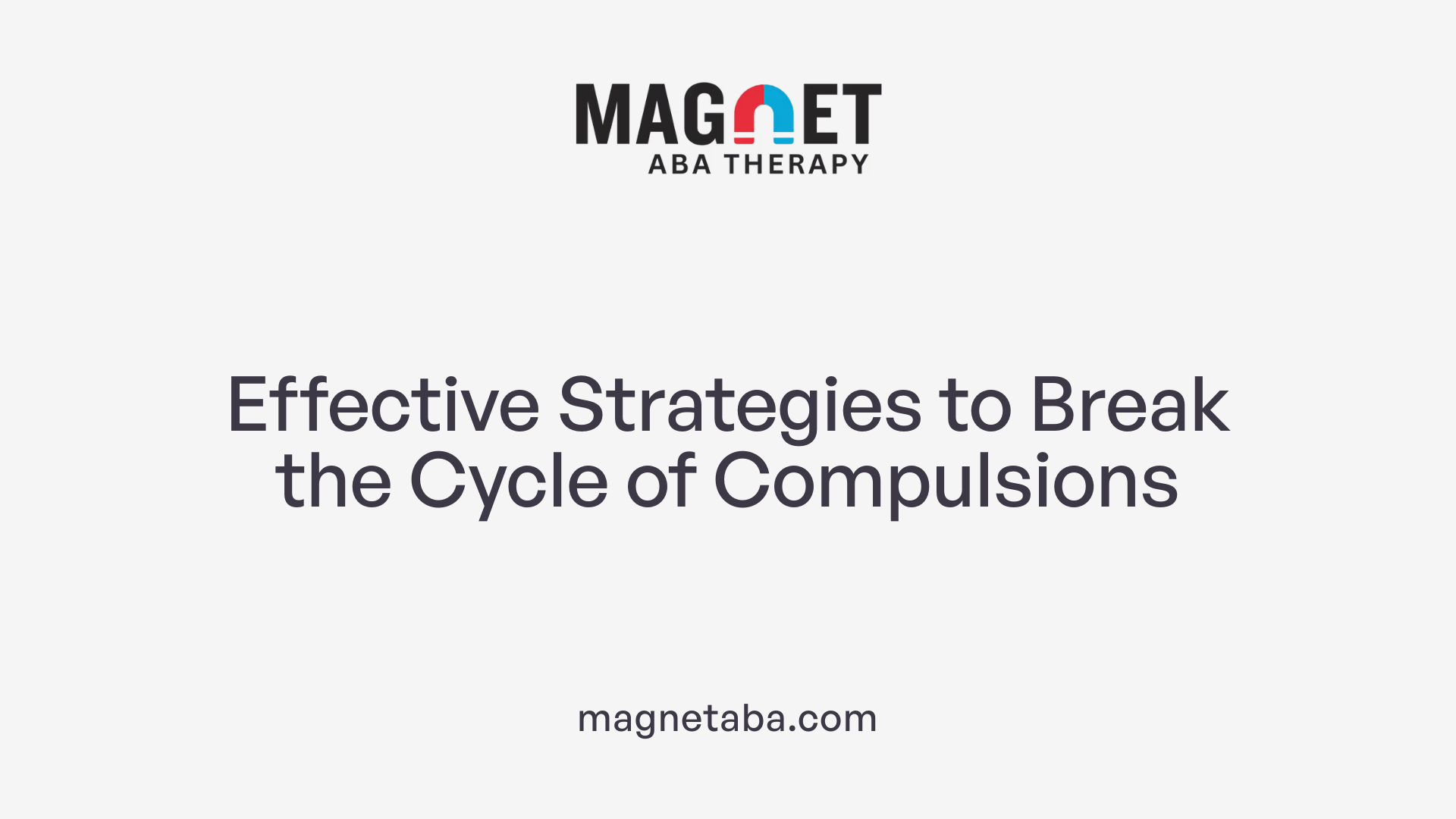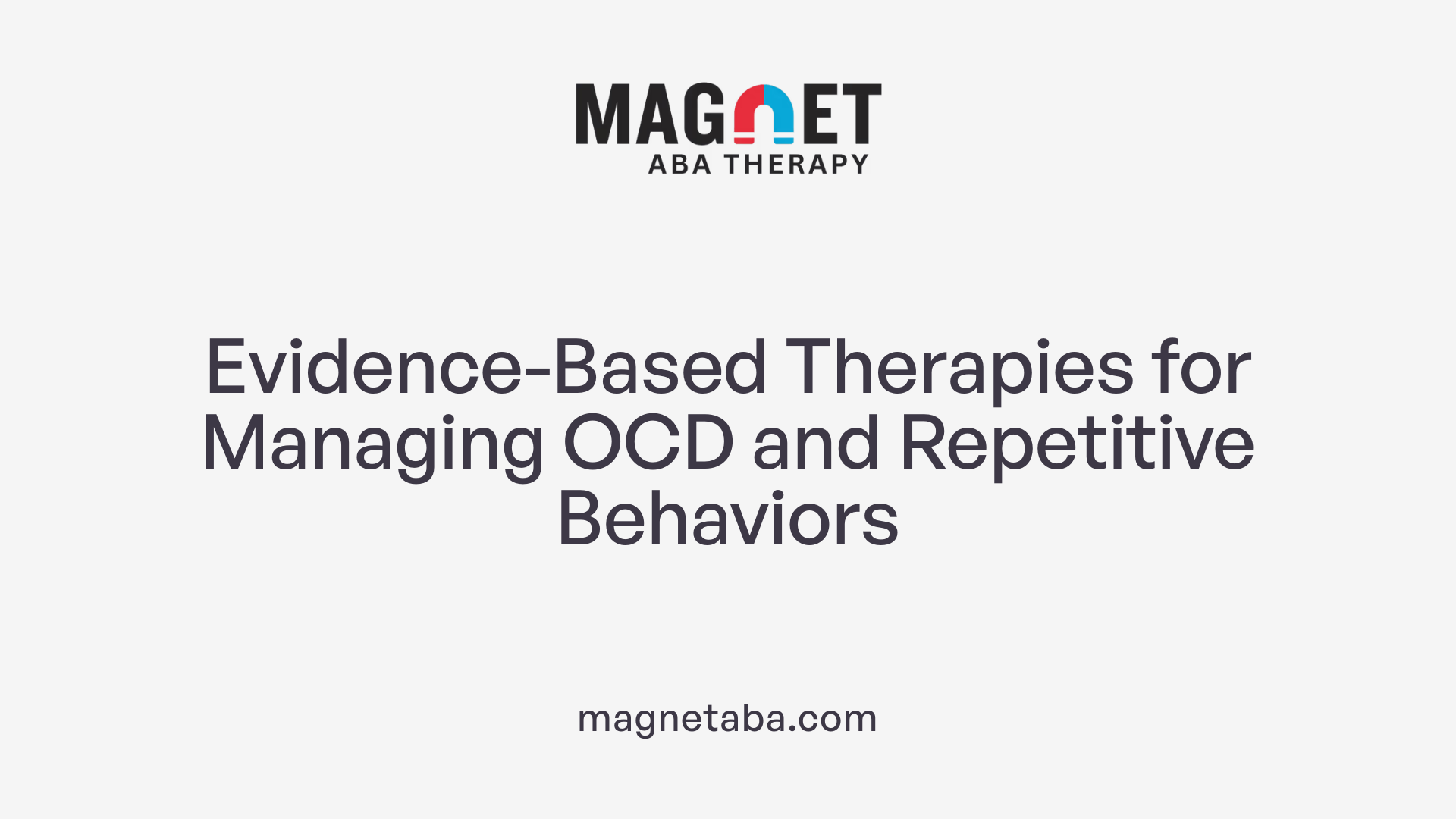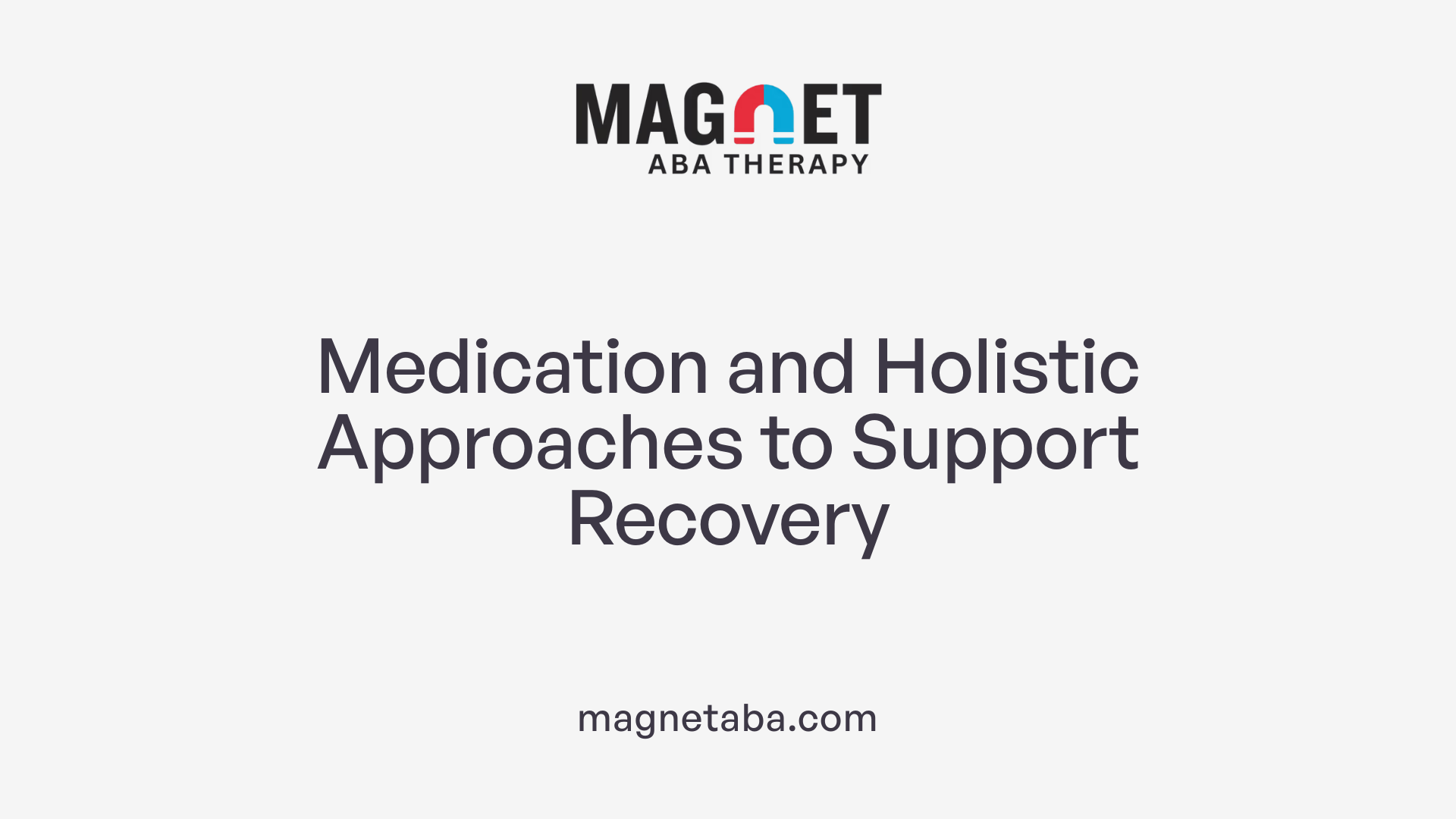Understanding and Addressing Compulsive Behaviors
Compulsive behaviors are repetitive actions performed repeatedly despite the negative impact they may have on an individual's life. These behaviors span a wide range, including obsessive-compulsive disorder (OCD), hoarding, gambling, body-focused repetitive behaviors like hair-pulling and skin-picking, and more. Recognizing these behaviors, understanding their underlying mechanisms, and employing evidence-based behavioral strategies are essential steps toward effective management and potential recovery.
Types and Manifestations of Compulsive Behaviors
 'Compulsive behaviors manifest in various forms, often driven by underlying mental health conditions such as obsessive-compulsive disorder (OCD), or as habitual actions linked to emotional distress. Understanding the diverse types and how they influence daily life is crucial for recognizing and managing these behaviors.'
'Compulsive behaviors manifest in various forms, often driven by underlying mental health conditions such as obsessive-compulsive disorder (OCD), or as habitual actions linked to emotional distress. Understanding the diverse types and how they influence daily life is crucial for recognizing and managing these behaviors.'
Different types of compulsive behaviors include OCD, hoarding, gambling, Body-Focused Repetitive Behaviors (BFRBs), eating disorders, and internet use. Each type has unique characteristics but shares similarities in repetitive, uncontrollable actions that often serve to reduce anxiety or negative feelings.
Obsessive-Compulsive Disorder (OCD) involves persistent intrusive thoughts (obsessions) and repetitive actions (compulsions) performed to alleviate distress. Common compulsions in OCD include excessive hand-washing, checking locks or appliances, and ordering objects meticulously. These rituals strive to diminish fears or imagined dangers but often only provide brief relief.
Hoarding is characterized by difficulty discarding possessions, leading to cluttered environments that impair daily functioning. Individuals may compulsively accumulate items because of anxiety over losing something or attachment issues. This behavior can significantly hinder personal safety and social relationships.
Gambling disorder involves persistent problematic gambling behavior that causes emotional distress and financial problems. Unlike other behaviors, the drive often stems from a craving for the thrill or relief from stress, making it a challenging compulsive act to control.
Body-Focused Repetitive Behaviors (BFRBs), such as nail-biting, skin-picking, and hair-pulling, are linked to obsessive tendencies. These actions often serve as coping mechanisms for anxiety or boredom but can lead to physical harm and emotional distress.
Eating disorders, including binge eating and compulsive overeating, are driven by emotional triggers and often involve secretive food consumption, weight concerns, or food rituals. Such behaviors can impact physical health and self-esteem.
Excessive internet use and online gaming may evolve into compulsive habits, interfering with responsibilities, social interactions, and mental health.
How these behaviors manifest and their impacts on daily life vary depending on severity and individual circumstances. Typically, individuals with compulsive behaviors show signs such as uncontrollable urges, performing rituals despite recognizing their irrationality, and spending excessive time on these actions.
Signs include:
- Repetitive and ritualistic actions in response to intrusive thoughts.
- Continued behavior despite negative consequences.
- Feelings of distress or anxiety when unable to perform behaviors.
Impacts on daily life are often profound:
- Disruption of personal, social, and occupational routines.
- Increased stress and emotional exhaustion.
- Social withdrawal and relationship challenges.
- Impaired physical health and safety risks, especially with behaviors like hoarding or compulsive eating.
Managing these behaviors involves recognizing their signs early and seeking appropriate treatment, which may include cognitive-behavioral therapy, medication, and supportive interventions tailored to individual needs.'}
Foundations of Behavioral Management for Compulsive Actions

How do behavioral management strategies work for compulsive actions?
Behavioral management strategies for compulsive actions mainly focus on changing the cycle of thoughts, feelings, and behaviors that sustain compulsions. Techniques like Exposure and Response Prevention (ERP) are considered gold standard treatments for OCD. In ERP, individuals are gradually exposed to feared objects, situations, or intrusive thoughts without performing the compulsive act. Over time, this reduces the anxiety linked to these triggers and diminishes the compulsive response.
Mindfulness plays an important role by helping individuals observe their thoughts and sensations without reacting automatically. This awareness fosters acceptance of intrusive thoughts, reducing the urge to act on them. It encourages living in the present moment, which lessens the power of obsessive thoughts.
Recognizing specific triggers allows for targeted interventions. For example, if touching public surfaces triggers hand-washing compulsions, gradual exposure to such stimuli followed by resisting the response can lessen the behavior.
Developing coping skills enhances self-control. Relaxation techniques, such as deep breathing or meditation, can decrease overall anxiety. Delay techniques—deliberately postponing a response—help weaken the habit of immediate compulsive action.
Support from loved ones, a healthy lifestyle, and self-acceptance are vital. Engaging in regular physical activity, practicing self-compassion, and avoiding shame about compulsions create an environment conducive to change.
Overall, these strategies alter the underlying thought-behavior cycle, decrease the anxiety and distress associated with obsessions, and empower individuals to manage urges proactively, leading to improved daily functioning and quality of life.
Effective Therapeutic Techniques for Managing OCD and Other Compulsions

Are there evidence-based psychological strategies for managing compulsive behaviors?
Yes, many well-researched psychological strategies exist for managing compulsive behaviors, particularly in conditions like obsessive-compulsive disorder (OCD). The most supported approach is Exposure and Response Prevention (ERP), a specialized form of cognitive-behavioral therapy (CBT). ERP involves gradually exposing individuals to anxiety-provoking stimuli while deliberately resisting the urge to perform compulsive rituals. Over time, this reduces the compulsive response and the intensity of obsessions.
CBT, especially when combined with ERP, has been shown through numerous randomized controlled trials and systematic reviews to significantly alleviate symptoms. These therapies help individuals recognize and challenge unhelpful thoughts and behaviors, fostering more adaptive responses.
In addition to ERP and CBT, Acceptance and Commitment Therapy (ACT) is gaining traction. ACT encourages individuals to accept distressing thoughts without acting on them and to focus on engaging in meaningful activities despite ongoing symptoms. Mindfulness practices, which cultivate present-moment awareness, also serve as effective adjuncts, helping individuals observe their thoughts without judgment.
Overall, the success of these strategies relies heavily on their tailored application under the guidance of trained mental health professionals, emphasizing a personalized approach according to each patient's needs and specific triggers.
Pharmacological and Holistic Support in Managing Compulsions

What role do medications like SSRIs, clomipramine, and other drugs play in treating compulsive behaviors?
Medications are a cornerstone in the treatment of various compulsive behaviors, especially for conditions like OCD. Selective Serotonin Reuptake Inhibitors (SSRIs)—such as fluoxetine, fluvoxamine, paroxetine, and sertraline—are commonly prescribed because they increase serotonin levels in the brain, which helps regulate mood and reduce obsessive and compulsive symptoms. Clomipramine, a tricyclic antidepressant, is also effective and often used for severe cases. These medications can diminish the intensity and frequency of compulsive urges and obsessive thoughts, enabling individuals to function more effectively.
It's important to note that medications usually work best when combined with psychological therapies like cognitive-behavioral therapy (CBT), particularly exposure and response prevention (ERP). While medications can significantly improve symptoms, they often need to be taken over a longer period—typically months to years—and should always be managed by a healthcare professional to monitor side effects and dosage adjustments.
Possible side effects of SSRIs include nausea, agitation, sleep disturbances, sexual dysfunction, and in some cases, increased anxiety initially. Clomipramine can cause dry mouth, weight gain, urinary retention, and dizziness. Regular follow-up with a doctor is crucial to ensure safe and effective treatment.
How can holistic practices like mindfulness, self-acceptance, and lifestyle modifications complement pharmacological treatment?
Holistic approaches offer valuable support alongside medication treatments, helping individuals develop a healthier relationship with their thoughts and behaviors. Mindfulness techniques enable patients to observe their obsessive thoughts and compulsive urges without automatically acting on them, fostering acceptance and reducing the power of these thoughts.
Practicing self-acceptance and compassion is essential in minimizing shame or guilt associated with OCD and other compulsive behaviors. This attitude encourages resilience and persistence in facing challenging symptoms.
Lifestyle modifications—such as maintaining a balanced diet, exercising regularly, ensuring adequate sleep, and managing stress—do not replace medical treatments but serve as vital adjuncts. Regular physical activity can alleviate anxiety, improve mood, and support cognitive functioning.
Other supportive practices include engaging in enjoyable hobbies, participating in support groups, and employing relaxation activities like deep breathing, meditation, or yoga.
By integrating these holistic strategies, individuals can better manage their symptoms, reduce stress, and improve overall well-being, which can enhance responsiveness to medication and therapy.
Is it possible for OCD to resolve on its own?
OCD generally does not resolve on its own, as it is a chronic cognitive disorder that requires targeted treatment. While some individuals may experience periods where symptoms lessen or become more manageable, spontaneous remission is uncommon. OCD is considered a lifelong condition that often requires ongoing management.
Effective control typically involves psychotherapy—particularly exposure and response prevention (ERP)—and medication. These interventions help reduce the severity of symptoms and improve quality of life. Early diagnosis and sustained treatment increase the likelihood of achieving better outcomes.
It is important to recognize that without appropriate intervention, OCD symptoms may persist or worsen, potentially causing significant impairment in daily functioning, social relationships, and occupational performance.
How can one stop OCD rituals and thoughts?
To effectively stop OCD rituals and manage intrusive thoughts, consulting a mental health professional for proper evaluation is essential. Diagnosis typically involves psychological assessment and sometimes physical examination to rule out other causes.
The primary treatment modality for OCD is cognitive-behavioral therapy, especially exposure and response prevention (ERP). In ERP, individuals are gradually exposed to situations or stimuli that trigger their obsessions while learning to resist performing compulsive responses. This process helps diminish the compulsive behavior and reduces anxiety over time.
Medications, mainly SSRIs and clomipramine, can significantly reduce symptoms, although they may come with side effects. It is vital to work with a doctor to find the right medication and dosage.
Additional strategies include developing a structured routine, practicing stress management techniques like mindfulness and relaxation, and engaging in support groups. These resources provide encouragement and understanding, facilitating long-term management.
In severe cases, advanced treatments such as deep brain stimulation (DBS) or transcranial magnetic stimulation (TMS) may be considered under medical supervision.
By taking a comprehensive approach that combines therapy, medication, lifestyle adjustments, and social support, individuals can effectively control and reduce their OCD rituals and thoughts, leading to an improved quality of life.
Integrated and Supportive Approaches to Managing Chronic Compulsions
What are effective treatments for compulsive behaviors?
Treating compulsive behaviors often involves a multifaceted approach. Evidence-based psychotherapy, especially cognitive-behavioral therapy (CBT), plays a central role. Within CBT, exposure and response prevention (ERP) is regarded as the most effective method for reducing compulsions, by gradually exposing individuals to triggers and helping them resist performing rituals. Habit reversal training is another behavioral strategy particularly effective for body-focused repetitive behaviors (BFRBs) like nail-biting, skin-picking, and hair-pulling.
Medications also support treatment, notably selective serotonin reuptake inhibitors (SSRIs) such as fluoxetine, sertraline, and fluvoxamine. Clomipramine, a tricyclic antidepressant, and other pharmacological options like naltrexone may also be used, especially when combined with therapy to enhance effectiveness.
Support groups and self-help measures further supplement formal treatment. Techniques like occupying hands with objects or developing distraction strategies can help manage urges. Tailored interventions are crucial because they address specific behaviors and individual needs.
Overall, combining psychotherapy, medication, and support mechanisms provides the best chance of managing and reducing compulsive behaviors effectively.
How can triggers be identified and compulsions resisted?
Knowing what sparks compulsive behaviors is fundamental to managing them. Triggers vary widely but often include stressful situations, certain environments, or physiological sensations like bodily discomfort or anxiety. Identifying these cues can be achieved through careful observation and journaling to pinpoint patterns.
Once triggers are recognized, resisting compulsions involves strategic techniques. Exposure and response prevention (ERP) is pivotal; it involves systematically confronting triggers without engaging in the compulsive ritual, which over time reduces anxiety associated with the trigger.
Mindfulness plays a pivotal role by enhancing awareness of thoughts, feelings, and bodily sensations. This helps individuals observe urges without acting on them impulsively.
Cognitive restructuring can also challenge irrational beliefs tied to triggers, reducing the urge’s power. Additionally, lifestyle changes such as relaxation exercises, regular physical activity, and stress management can diminish overall reactivity to triggers.
Seeking professional guidance from mental health providers ensures that strategies are personalized and effective. Support networks, including family and peer groups, are vital in providing encouragement and accountability, facilitating long-term management of triggers and compulsions.
The Path to Recovery: Long-term Strategies and Support Networks
How can one stop OCD rituals and thoughts?
Managing and reducing OCD rituals and intrusive thoughts is a gradual process that benefits from professional guidance and a comprehensive treatment approach. The first step involves obtaining a precise diagnosis through psychological evaluation and medical assessment to distinguish OCD from other conditions. Once diagnosed, evidence-based therapies like cognitive-behavioral therapy (CBT), especially Exposure and Response Prevention (ERP), are highly effective. ERP exposes individuals to feared stimuli while helping them resist engaging in compulsions, thereby weakening the association between intrusive thoughts and compulsive actions.
Medications, particularly selective serotonin reuptake inhibitors (SSRIs) such as fluoxetine or sertraline, are often prescribed to help regulate symptoms. Clomipramine, a tricyclic antidepressant, may also be used in some cases. These medications are best combined with therapy for optimal results and require regular monitoring for side effects.
In severe or treatment-resistant cases, advanced interventions like deep brain stimulation (DBS) or transcranial magnetic stimulation (TMS) might be considered under strict medical supervision.
Apart from medical treatments, lifestyle adjustments such as maintaining a structured routine, practicing mindfulness and stress management techniques, and fostering connections through support groups can significantly aid in symptom control. Support networks provide encouragement, shared experiences, and practical advice, which are vital in managing OCD over the long term.
Consistent practice of learned strategies, ongoing therapy, and peer support contribute to enduring progress, helping individuals reclaim control over their thoughts and behaviors.
What are the signs and impacts of compulsive behaviors?
Recognizing compulsive behaviors early can make treatment more effective. Typical signs include repetitive, ritual-like actions such as excessive handwashing, checking locks multiple times, ordering items repeatedly, hoarding items with little value, or engaging in compulsive counting or repeating words. Often, individuals perform these acts despite knowing they are irrational but feel driven to alleviate anxiety or prevent a feared event.
The manifestations of these behaviors can be subtle or overt, but their persistence leads to significant negative impacts. They can interfere with daily routines, impair work performance, strain relationships, and cause social withdrawal. For instance, compulsive cleaning can consume hours each day, making regular responsibilities difficult to fulfill.
Physically, some behaviors pose health risks—like skin damage from skin-picking or injuries from repeated movements. Mentally, individuals often experience heightened stress, frustration, and feelings of helplessness.
The long-term impacts are profound: ongoing distress can diminish quality of life, increase social isolation, and foster feelings of shame and guilt. When these behaviors become ingrained, they reinforce a cycle of anxiety and reassurance-seeking that complicates efforts to regain control.
Understanding these signs and consequences underscores the importance of early intervention and sustained support to promote recovery and improve overall well-being.
Strategies for maintaining progress and adapting to life changes
Long-term management of compulsive behaviors involves more than initial treatment; it requires ongoing effort to prevent relapse and adapt to evolving life circumstances. Maintaining progress begins with continuous engagement in therapy, where techniques like ERP, CBT, or ACT are reinforced, and new challenges are addressed.
Support networks, including support groups, family education, and peer communities, play a crucial role in providing emotional encouragement and accountability. Sharing experiences and coping strategies fosters resilience and a sense of belonging.
Practical strategies include establishing and adjusting routines to accommodate life changes such as moving, new jobs, or personal transitions. Flexibility in routines helps reduce stress and minimizes triggers for compulsive behaviors.
Mindfulness practices, such as meditation or deep breathing exercises, enhance awareness of urges and thoughts, allowing individuals to observe them without acting impulsively. These techniques help build tolerance for uncertainty and discomfort associated with OCD.
Lifestyle choices also influence long-term management. Regular exercise, a healthy diet, adequate sleep, and limiting substances like caffeine or alcohol can reduce overall anxiety levels.
Preventive measures include recognizing early warning signs of relapse—like increased anxiety or craving specific compulsions—and seeking prompt professional support to address these issues before they intensify.
Adaptability is vital; as individuals encounter different life stages or stressors, they may need to modify their coping strategies, routines, or treatment plans accordingly. Maintaining a flexible, proactive approach and leveraging support mechanisms sustains improvements and promotes a balanced, fulfilling life despite ongoing challenges.
Moving Towards Lasting Control and Well-being
Managing compulsive behaviors effectively requires a comprehensive approach that combines evidence-based psychotherapy, appropriate medication, lifestyle modifications, and a strong support network. Techniques like CBT and ERP remain the cornerstone of treatment, helping individuals confront triggers, resist compulsions, and challenge obsessive thoughts. Support systems including family, support groups, and ongoing therapy play critical roles in maintaining progress and preventing relapse. Education about the nature of compulsions, fostering self-acceptance, and implementing holistic practices such as mindfulness further empower individuals to lead healthier, more balanced lives. Although OCD and related compulsive behaviors can be persistent, dedicated treatment and proactive self-care can enable many people to achieve significant relief and improved quality of life.
References
- Compulsive Behaviors | Psychology Today
- Tips & Advice: Managing Compulsive Behaviors | AFTD
- Understanding and Overcoming Compulsive Behaviors
- How to Stop Compulsive Behaviors: Managing OCD
- Obsessive-compulsive disorder (OCD) - Diagnosis and treatment
- Cognitive-Behavioral Therapy for Obsessive-Compulsive Disorder
- Compulsive Behavior | Symptoms & Treatment Options | Zencare
- OCD (Obsessive-Compulsive Disorder): Symptoms & Treatment
- [PDF] Treatment of Socially Mediated Compulsive Behavior in a High ...











